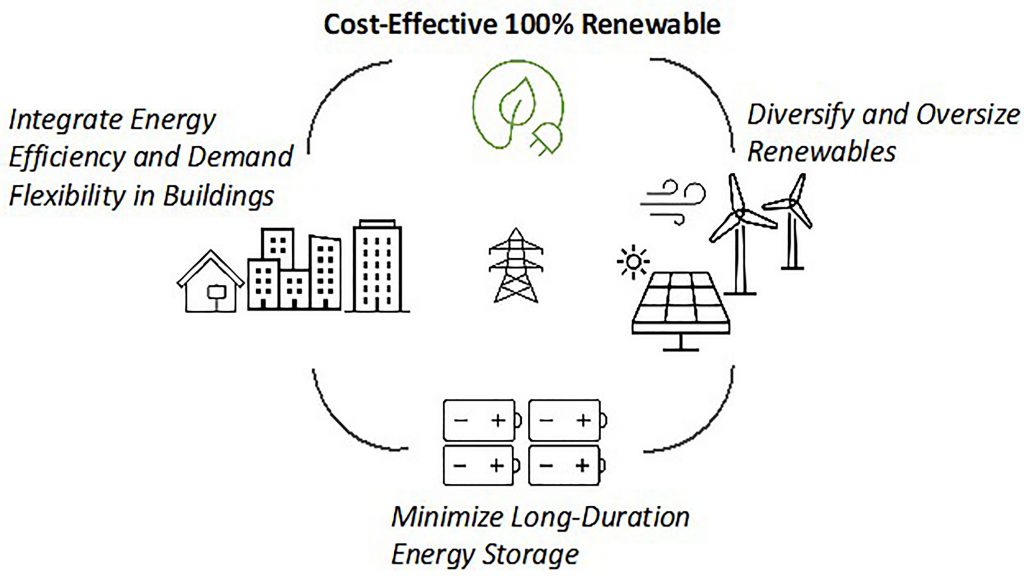From the Journal: Journal of Renewable and Sustainable Energy
WASHINGTON, November 3, 2021 — Renewable energy has the potential to decrease electricity costs, create jobs, improve environmental health, and reduce medical costs for issues related to pollution and climate change. However, renewable sources, such as wind and solar energy, vary in their availability, which impacts power grid reliability.
In the Journal of Renewable and Sustainable Energy, from AIP Publishing, researchers from the U.S. Department of Energy National Renewable Energy Laboratory describe results from a techno-economic analysis aimed at identifying pathways to 100% renewable power systems. By analyzing readily available supply and demand strategies within specific U.S. regions, the team found a combination of resource diversification, excess generation, building efficiency, and demand flexibility improvements could reduce or even eliminate the need for long-duration energy storage in some regions.

“There are triple effects of building stock advancements,” said co-author Sammy Houssainy. “Through building efficiency and demand flexibility, we can reduce renewable capacity requirements, energy storage needs, and potential transmission costs.”
For each U.S. region studied, the scientists showed that a clear and individualized optimum energy portfolio exists. The mix of renewable energy sources within each region’s portfolio (more allocation to wind for colder climates and solar for hotter climates, for example), combined with building energy efficiency, can be optimized to minimize storage needs and total costs using the calculation methodology they developed.
“What’s most striking about our findings is the achievability of a fully renewable system with technology building blocks that are accessible today,” said co-author William Livingood. “For cost-effectively achieving 100% renewable scenarios, our newly developed calculation methodology provides general principles that help guide the needed site-specific, detailed engineering design and planning processes.”
This calculation methodology can be leveraged for site-specific studies, which could be passed to engineering firms and design teams to map out the necessary infrastructure improvements. To carry out the suggested steps, sensors and computerized controls will be needed to optimally integrate these technology building blocks.
This study relied on U.S Department of Energy open-source EnergyPlus and OpenStudio building energy modeling tools, combined with survey data from the U.S. Energy Information Administration, to simulate the building stock across several climate zones with varying regional energy trends and opportunities.
In contrast to previous studies, the team identified how oversizing of increasingly lower-cost renewable generation paired with building efficiency and demand flexibility may compete with long-duration energy storage cost targets. Since many long-duration storage technologies are currently cost-prohibitive, logistically difficult, or still underdeveloped, this pathway could present a more rapid and cost-optimal approach to decarbonization.
###
For more information:
Larry Frum
media@aip.org
301-209-3090
Article Title
Optimal strategies for a cost-effective and reliable 100% renewable electric grid
Authors
Sammy Houssainy and William Livingood
Author Affiliations
National Renewable Energy Laboratory
